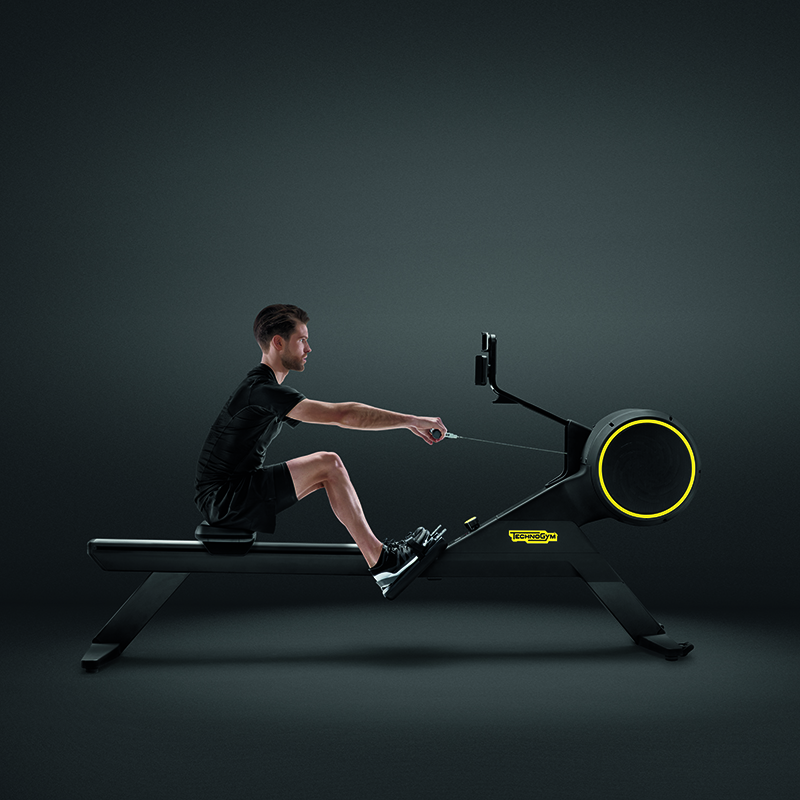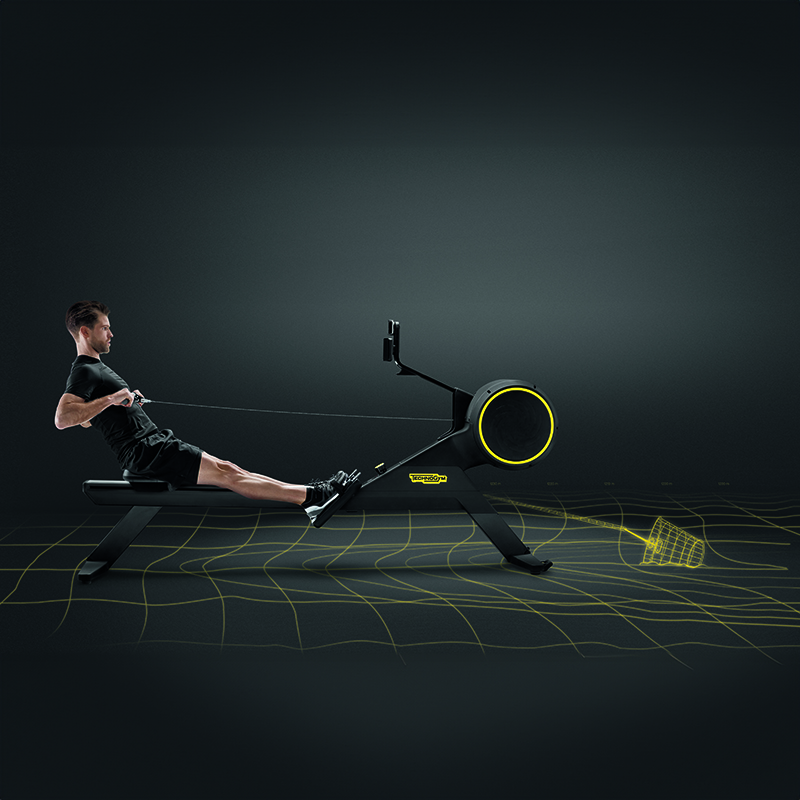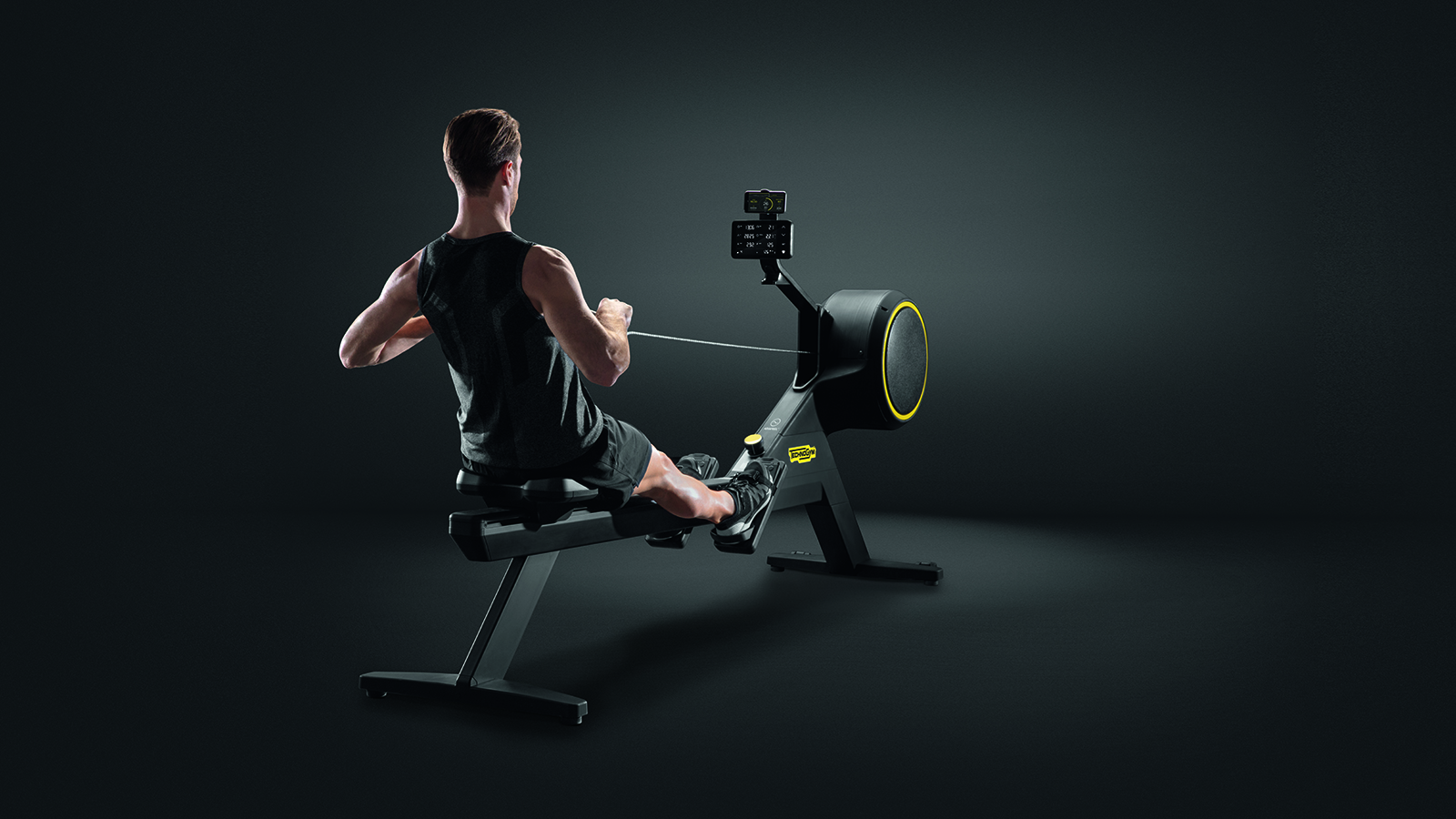WRITTEN BY WOODSIDE DIRECTOR OF TRAINING, JOHN BEANE
This month we are tackling the second installment of our deep dive into cardio. The last time we discussed cardio as a topic we focused on energy systems development (ESD) and put the concepts to use with the SkiErg. You can find that post here. Our focus for this feature will be on aerobic capacity and utilizing the Technogym Skillrow to measure it.
It’s no secret why it is important to incorporate cardio into your program. There are numerous benefits to cardio and these days you can’t escape the discussion around its relevance to metabolic health, performance and increasing health span. Some of our favorites out there like Dr. Peter Attia, Dr. Andrew Huberman and Rich Roll have been beating this drum for quite some time now. If you have a short commute to work, it may take you two years to actually finish one of their podcasts but they’re always worth a listen. The big question is how to approach the thought process around our cardio programming. This is where measuring your aerobic capacity comes into play.
Arguably the most popular way to measure your aerobic capacity is with a VO₂ max test. You could even say they’re one in the same. Your aerobic capacity, as measured with a VO₂ max test, is the maximal amount of oxygen your body can consume during maximal intensity exercise. It is the product of your maximal cardiac output and your arterial-venous oxygen difference. Oxygen is a critical ingredient in the respiratory process that’s involved in breathing. As you breathe in oxygen, your lungs absorb and turn it into energy called adenosine triphosphate (ATP). ATP powers your cells and helps release the carbon dioxide (CO₂) that’s created during your respiratory process when you exhale. The benefits are simple: The greater your VO₂ max, the more oxygen your body can consume and the more effectively your body can use that oxygen to generate the maximum amount of ATP energy. This means that your body can better handle aerobic fitness activities that require a lot of oxygen intake like running, swimming and jogging.
There are several ways to measure VO₂ max. Some are easily accessible and user friendly but less accurate, while some are hard to access and uncomfortable but highly accurate. Ultimately the one you choose is the right one because it is always beneficial to have a point at which to start your program and have a metric to measure improvement. One way we love to measure our clients’ aerobic capacity (VO₂ max) is with the 2000-meter row. The 2000m row is highly repeatable and user friendly. We use the Technogym Skillrow we have here at Woodside to conduct this test for our Training clients. This provides the basis for our cardio programming recommendations and the marker for success as we re-test throughout the Training cycles. Below is a breakdown of the form for the most efficient technique on the Skillrow as well as a self-guide to conduct the VO₂ max on the Skillrow. As always let our Training team know if you have questions.

Rowing Technique
How it Works
The drive is the work portion of the stroke; the recovery is the rest portion that prepares you for the next drive. The body movements of the recovery are essentially the reverse of the drive. Blend these movements into a smooth continuum to create the rowing stroke.
The Catch
- Arms are straight; head is neutral; shoulders are level and not hunched.
- Upper body is leaning forward from the hips with the shoulders in front of the hips.
- Shins are vertical, or as close to vertical as is comfortable for you. Shins should not move beyond perpendicular.
- Heels may lift as needed.
The Drive
- Start the drive by pressing with your legs, and then swing the back through the vertical position before finally adding the arm pull.
- Hands move in a straight line to and from the flywheel.
- Shoulders remain low and relaxed.
The Finish
- Upper body is leaning back slightly, using good support from the core muscles.
- Legs are extended and handle is held lightly below your ribs.
- Shoulders should be low with wrists and grip relaxed. Wrists should be flat.
The Recovery
- Extend your arms until they straighten before leaning from the hips towards the flywheel.
- Once your hands have cleared your knees, allow your knees to bend and gradually slide the seat forward on the monorail.
- For your next stroke, return to the catch position with shoulders relaxed and shins vertical.
Testing Protocol
VO₂ Max Pre-Test
- Abstain from intense cardio for at least 24 hours prior to the test.
- Conduct the test prior to any other training that day or at the beginning of your session.
- A general warm-up can be performed on the Skillrow of 100m-250m at a very low intensity followed by two minutes of rest.
VO₂ Max Test
- Set the damper (resistance) to 5 ½.
- Find a happy place.
- Row for 2000 meters.
- *Record your time
Recovery
- Row 150m – 250m at a very slow pace.
- We recommend 8 (4 second inhale, 4 second hold, 8 second exhale) rounds of 90/90 breathing as well.

You can find a VO₂ Max Calculator here. Enter your data and you will instantly get your VO₂ max estimation.
Our Training team can help you the Technogym Skillrow into your workout routine or guide you through a VO₂ Max Test. To learn more click here or email us.


